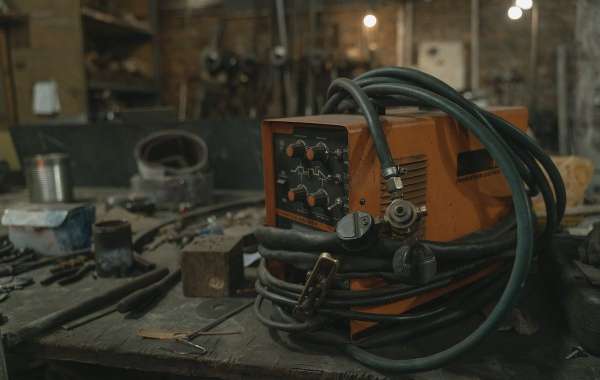Firearms have been a part of human history for centuries, serving as tools for both protection and sport. In today's world, whether you're a novice or an experienced shooter, the importance of proper firearms training cannot be overstated. One of the most sought-after skills in shooting is precision marksmanship, which allows you to hit your target with pinpoint accuracy. This journey from novice to sharpshooter is both challenging and rewarding, demanding dedication, practice, and a deep understanding of the fundamentals. In this guide, we will explore the comprehensive path to becoming a sharpshooter through one shot firearms training.
Getting Started
Choosing the Right Firearm
The first step in your journey is selecting the right firearm. Handguns, rifles, and shotguns each have their unique characteristics and applications. Consider your intended use, personal preferences, and local laws when making your choice. Additionally, pay attention to caliber and ammunition selection, as these factors significantly impact accuracy and recoil management.
Safety First
Before you even handle a firearm, familiarize yourself with the cardinal rules of firearms safety. Always treat every gun as if it were loaded, keep the muzzle pointed in a safe direction, keep your finger off the trigger until you're ready to shoot, and know your target and what's beyond it. Investing in appropriate safety gear and accessories, such as hearing protection and eye protection, is crucial for your well-being.
Legal and Ethical Considerations
Understanding firearms laws in your area is essential. Ensure that you are legally allowed to possess and use firearms and abide by all applicable regulations. Responsible firearm ownership and usage go hand in hand with ethical considerations. Respect for human life and property is paramount, and firearms should only be used in a lawful and justifiable manner.
The Fundamentals of Marksmanship
Stance and Grip
Your shooting stance and grip form the foundation of accurate marksmanship. Different shooting stances, 一拍即寄 like the Isosceles, Weaver, and Modified Weaver, offer various advantages. Likewise, mastering the proper handgun and long-gun grips will enhance your control and accuracy.
Sight Alignment and Sight Picture
Achieving accurate shots depends on aligning the front and rear sights and obtaining a clear sight picture. This fundamental skill ensures that your shots land where you want them to.
Trigger Control
The way you manipulate the trigger is crucial for accuracy. Learning to stage the trigger and maintain steady pressure without disturbing the sights will significantly improve your shooting.
Breathing and Trigger Squeeze
Proper breathing techniques and a smooth trigger squeeze are the final pieces of the marksmanship puzzle. Control your breath to minimize movement, and practice a consistent trigger squeeze to avoid jerking the gun when firing.
Dry Fire Practice
Benefits of Dry Fire
Dry fire practice is an invaluable tool for honing your shooting skills. It allows you to work on fundamentals without live ammunition, helping to develop muscle memory and refine your techniques.
Dry Fire Drills
Engage in various dry fire drills to improve your sight picture, trigger control, and drawing from a holster (for handgun shooters) or bolt manipulation (for rifle shooters).
Developing Muscle Memory
Consistent dry fire practice builds muscle memory, which is critical for consistency in your shooting. Repetition is the key to success.
Live Fire Training
Range Safety Rules and Etiquette
Before heading to the shooting range, familiarize yourself with range safety rules and etiquette. These rules ensure a safe and respectful environment for all shooters.
Starting with Short Distances
Begin your live fire training at short distances to build confidence and focus on accuracy. Gradually extend your range as your skills improve.
Building Confidence with Accuracy
Precision shooting requires patience and confidence. Focus on accuracy before speed, ensuring that each shot is on target.
Progressing to Longer Distances
As your proficiency increases, challenge yourself with longer distances. Consistency and mastery will take time, but the rewards are worth it.
Overcoming Recoil Management
Recoil management is an essential skill for sharpshooters. Learn how to control and mitigate recoil for faster follow-up shots.
Speed vs. Precision Shooting
Balancing speed and precision is a continuous process. Understand when each is necessary and practice accordingly.
Mental Preparation
Developing a Shooter's Mindset
A shooter's mindset is as important as technical skills. Develop mental fortitude through concentration, focus, and visualization techniques.
Dealing with Nervousness and Anxiety
Nervousness and anxiety are common, especially in high-pressure situations. Learn strategies to control these emotions and maintain composure.
Setting Goals and Tracking Progress
Set realistic goals for your marksmanship journey and track your progress. Celebrate your achievements and learn from your mistakes to keep improving.
Advanced Training and Techniques
Shooting on the Move
Advanced shooters must be able to engage targets while on the move. Master this skill to increase your effectiveness in dynamic situations.
Multiple Targets and Engagements
Real-life scenarios may involve multiple threats. Learn how to engage multiple targets quickly and accurately.
Low-Light Shooting
Low-light conditions pose unique challenges. Familiarize yourself with low-light shooting techniques and equipment.
Shooting from Unconventional Positions
In some situations, you may not have the luxury of a perfect shooting stance. Practice shooting from unconventional positions to be prepared for any scenario.
Specialized Firearm Platforms
If you're interested in precision shooting or competitive shooting, consider specialized firearm platforms like precision rifles or customized handguns.
Competition and Scenario Training
Competitions and scenario-based training offer realistic challenges. Participating in such events will push your skills to new heights.
Maintaining Proficiency
Regular Practice and Drills
Consistent practice is essential to maintain and improve your marksmanship skills. Dedicate time to practice drills that challenge your abilities.
Equipment Maintenance
Regularly clean and maintain your firearms to ensure they function reliably. Neglecting maintenance can lead to malfunctions at critical moments.
Continuing Education and Training
The world of firearms is ever-evolving. Stay informed about new techniques, technologies, and legal changes by continuing your education and training.
Legal and Ethical Responsibilities
Staying Informed About Firearms Laws
Firearms laws can change, so stay updated on the latest regulations in your area to avoid legal complications.
Responsible Firearm Ownership and Storage
Secure your firearms to prevent unauthorized access and ensure they are stored safely, especially in households with children or non-shooters.
Ethical Considerations in Self-Defense
Remember that using deadly force is a last resort. Always prioritize de-escalation and non-lethal options when facing threats.
Conclusion
Becoming a sharpshooter through one shot firearms training is a journey that demands dedication, practice, and an unwavering commitment to safety and responsibility. While the path may be challenging, the rewards of achieving pinpoint accuracy and maintaining proficiency are immeasurable. Whether you pursue precision shooting for sport, self-defense, or personal satisfaction, the journey is a testament to discipline, skill, and the enduring respect for the power of firearms. Embrace the challenge, stay committed, and continually strive for excellence in your marksmanship journey.








